- Getting around Lijiang. Dont stay in the Old Towns more than 2 days, there is nothing to do. KRISS Oct 9, 2013 05:46
- 2013 Beijing Temple Fair BENNYLAU Feb 26, 2013 03:29
- Malaysian traveling from KUL - LAX vis Shanghai PVG ZATI_DY Jan 3, 2013 20:15
Between a Rock and a Hard Place
- Views: 5527
- |Vote: 0 0
- |Add to Favorites
- |Recommend to Friends
Under normal circumstances nobody wants to find themselves between a rock and a hard place. But about 2,300 years ago an ancient art form developed and began spreading East, putting artisans, craftsmen, monks and politicians in exactly that position.
And they liked it.
For the past 1,700 years, we’ve had a reason to do it to ourselves, too—and it’s well worth it. Many liked the rocks so much and thought they were so valuable that they stole some from their hard place and absconded with them to countries far beyond the Chinese border.
Who would put themselves in such a place?
I’m speaking of a little river valley of grottoes in southwestern Henan province, just a stone’s throw from the city of Luoyang. I’m speaking of the Longmen Grottoes.
Brailled Hillside
And truly, they are between a rock and a hard place. All that’s in front of you is a steep stone cliff hewn from the mountainside. Step back too far and you’ll be swept away by the Yi River. But overcome your fear of heights, and discover one of history’s truly remarkable artistic feats.
The Longmen Grottoes comprise 1,300 caves along a 1 kilometer stretch of cliffside where 2,800 steles and over 100,000 statues have been carved. The first artisan brought his chisel and hammer to stone in the year 493 during the Northern Wei Dynasty, and the caves were continually carved out through the Tang dynasty and into the Song, over a period of 400 years.
At the time, Buddhism had taken hold in China, its practices and art forms woven into Chinese society and philosophy. Eventually the consuming, devotional art of cave temples, which began in Eastern India in the 3rd century B.C., spread to China as well. Today, the Dunhuang Caves of Mogao along the Silk Road and the Yungang Grottoes in Shanxi along with those at Longmen together display the history and tradition of cave temples in palimpsest. The carvings at Longmen are said to exemplify the height of the carving tradition, unlike the others in their detail, character, size and quality.
And, seriously, when’s the last time you looked at art that was genuinely centuries old (and not just ‘rebuilt’ in a centuries-old style)?
Visual Chronicle
It doesn’t quite strike the onlooker at first that they’re standing there; bearing witness to the same benevolent brow of Buddha that was shaped by a human hand at a time when the crack of Pangaea splitting was still resonating on the airwaves. Or that it was even possible to scale sheer cliffs and hang out for hours on end, sloughing off the stone to reveal the divine shapes beneath.
And then it does hit: and everyone reacts to the awe differently. But most just find themselves happy to be there, between that mountainside stretch of rock and the narrow, hard place you stand on to view them.
But Longmen is not only distinctive for its age or its refinement. It’s a visual chronicle of the ebb and flow of power, politics, religion and social values over the 400 hundred years that they were being carved. Emperors and nobles who favored them and councilors who favored the nobles and monks who were in favor by the nobles and Emperor would all commission sites at Longmen. Artisans developed their own creative style, carving methods changed; a realism unknown before in stone carving breathed life into the limestone rock. It’s even rumored that some of the Tang statues are created in the likeness of notable figures of that time. Not to mention that women who held positions of esteem or power exercised their artistic eye and left their mark.
A Kilometer of Carving
About one third of the grottoes at Longmen were carved during the Northern Wei dynasty and two thirds were done during the Tang dynasty, from 618-907 AD. Upon passing beneath the bridge which serves as entrance gate to Longmen, the first grottoes reached are those from the Northern Wei. As the hillside unfolds southward, Wei recedes to Tang. Across the river perches the stately XiangShan Temple, or the Fragrant Mountain Temple and Bai Garden, the garden villa and tomb of the great Tang Dynasty poet, Bai Juyi. Additional grottoes freckle the eastern side of the river, though they’re not as distinctive and evolving as the tale that unfolds on Mt. Longmen on the western side of the River Yi.
Guyangdong grotto was the earliest cave completed at Longmen, and though it’s the first, it is found nearly in the middle of the cliffside. Sponsored by the Emperor Xiaowen of the Northern Wei Dynasty, the Buddha Sakyamuni and two bodhisattvas next to him are slender and emaciated, the mark of Northern Wei carving style.
Lianhua Cave
Lianhua Cave, or Lotus Cave, gets its name from the distinctive Lotus flower carved in relief on the ceiling of the 6 meter high cave. The archway of the cave entrance is decorated with carved flames and is guarded by a fearsome warrior in fine detailed clothing. The lotus on the ceiling, though carved centuries ago, still maintains its shape and detail, a testament to the lasting symbolism of the lotus flower not only in Buddhism but in the deep roots of Chinese culture. The disciple on the left side of the cave was carved with a high-bridged nose, deep eyes, a wrinkled forehead and worn-out clothing to evoke the image of an old Indian monk. As is the unfortunate tale with several statues at Longmen, the disciple’s head was stolen in the 1930’s and sold to France. It was not until the People’s Republic of China was founded that the grottoes at Longmen received full protection from the state.
Wanfo Cave
Wanfo Cave, or Ten Thousand Buddha Cave, is a marvel in its detail. More than 15,000 palm-sized sitting Buddhas are etched out on the north and south walls of the cave. They surround one giant Buddha flanked by two disciples, two bodhisattvas, two heavenly kings, two warriors and two lions. The statues in this cave reflect not only representations of the Buddhist order but the social order of China at that time. The cave was created in honor of Emperor Gaozong of the Tang Dynasty, visually spelling out the edict that the ruler of heaven is incarnated as Emperor on Earth. Two nuns were in charge of the cave construction. Later, they became famous for their technical skills and artistic eyes.
Yaofang Cave
One of the most historically valuable caves is Yaofang Cave. 140 medical prescriptions from the Tang Dynasty are recorded on both sides of its walls. Begun in Northern Wei, the Cave was not completed until the Tang dynasty, spanning almost two hundred years. The prescriptions list ways to treat over 40 diseases covering everything from internal medicine to neurology to surgery and pediatrics. There is even a prescription for treating Malaria. After the 10th century the prescriptions spread to Japan, where they have been found in one of the oldest Japanese medical journals listed under ‘Longmen Prescriptions’.
FengXian Grotto
The signature cave of Longmen Grottoes, Fengxian cave, lies at the southern end of the river valley and boasts the largest of the Tang stone sculptures. Completed in 675 and carved high up the cliffside, two long flights of stairs were created just to reach the cave. Ascending the steps is a (literally) breathtaking exercise in anticipation. At first the statue is completely hidden from view until, step by step, a colossal representation of the seated Vairocana Buddha, or Shining Light Buddha, unfolds before you until you stand upon the top step, still hundreds of feet away from the Buddha, craning your neck to take in the whole statue.
A Stunning Likeness...
The grotto contains a total of 9 giant statues: the Buddha, two disciples, two bodhisattvas, two heavenly kings and two warriors. The Buddha, over 17 meters tall, and its attending statues, display the height of Tang carving style. The faces are etched in human likeness, not rigid lifelessness, portraying different personalities, facial expressions, postures and movement. The resulting effect creates a connection between the onlooker and the statues—a reverence—that other carvings at earlier times (or at other sites) lack. The scale of Fengxian cave, its artistic design and life-like portrayals show the innovative skill and craftsmanship the Tang carvers reached almost 600 years before Giotto made the Virgin Mary reach out with a mother’s tenderness toward the baby Jesus in 13th century Italy.
Fengxian Grotto was commissioned by the first Empress of China, Wu Zetian, of the Tang Dynasty. It is rumored that the sculptors of Vairocana Buddha used a realistic life as creative inspiration for the statue’s soft features. Is the first Empress of China immortalized in stone?
To be continued...
Information
Getting There:
travel to the city of Luoyang in Henan Province by train, then hop on the public bus 81 across the street from the train station, whose terminus is Longmen Grottoes. 1.5RMB
Longmen Grottoes:
80RMB for a ticket valid for three days, which will let you see not only the grottoes on the west of the river but all the sites on the east side, including XiangShan Temple and Bai Garden and the Forest of Steles.
Where to Stay:
There are several cheap hotels in the vicinity of the train station. Don't pay more than 150 RMB per night for decent accomodation with a double bed and en-suite bathroom. Hawkers in front of the train station will try to get you to stay at their hotels. Ask to see the rooms first before you agree to a price. Watch your belongings while negotiating at the train station, pickpockets--both deft and inept--will attempt to swipe your things.



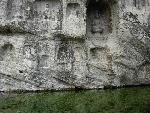

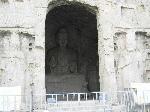
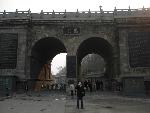
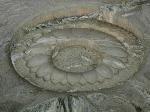
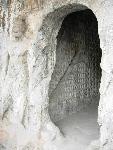
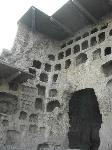


 Copyright © 1998-2025 All rights reserved.
Copyright © 1998-2025 All rights reserved.